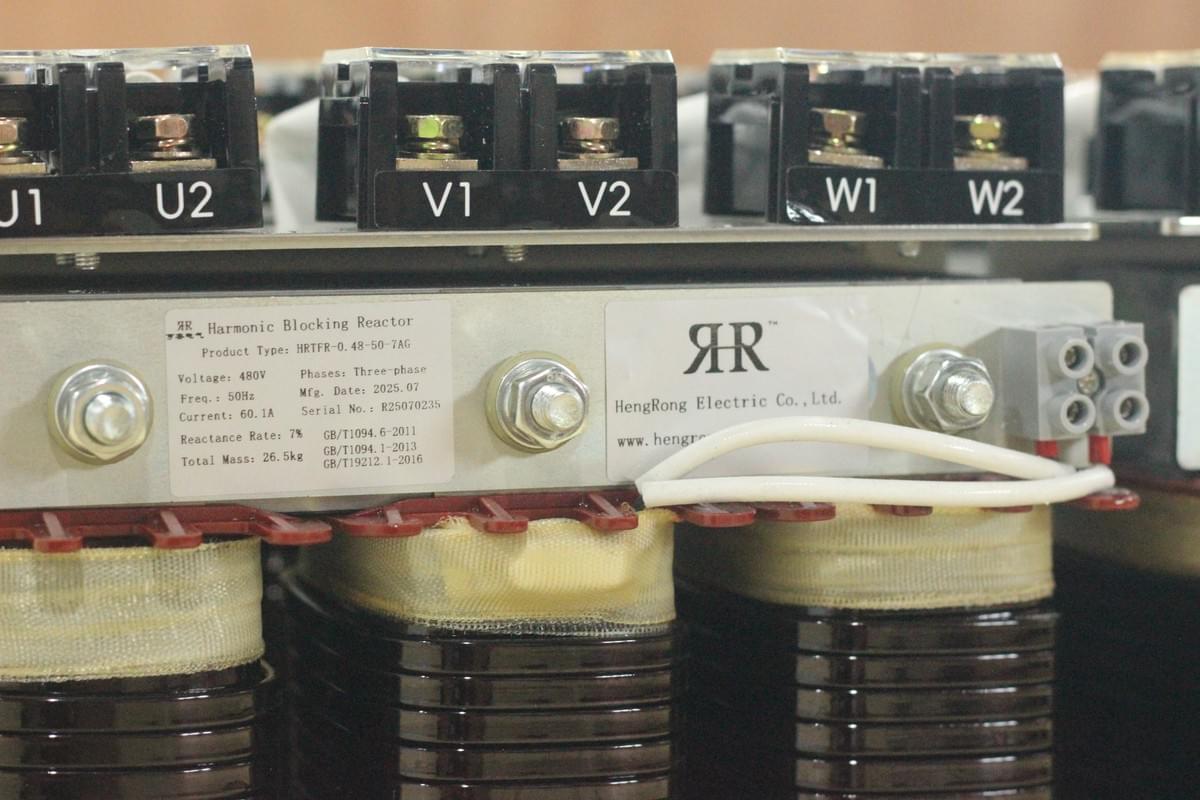The Critical Role of Reactors in Power Systems: Theory and Simulation of Power Frequency Overvoltage Suppression
The Critical Role of Reactors in Power Systems: Theory and Simulation of Power Frequency Overvoltage Suppression
In modern power systems, ensuring the safety and stability of electricity transmission is a top priority for utility providers and engineering teams. One of the most common yet dangerous issues is power frequency overvoltage, especially in high-voltage, long-distance transmission lines. Without effective control, such overvoltage can damage equipment and disrupt operations.
To address this challenge, reactors have become an essential solution for stabilizing voltage. This article explores the underlying principles, theoretical calculations, simulation validation, and practical application of reactors in suppressing power frequency overvoltage.

What Is Power Frequency Overvoltage and Why Are Reactors Essential?
Power frequency overvoltage refers to a temporary rise in voltage—typically at system frequency—triggered by switching operations, fault clearance, or light-load conditions. Though often short-lived, this type of overvoltage can exceed insulation limits and cause serious equipment failure.
During no-load or light-load operation, transmission lines display strong capacitive characteristics. This leads to voltage imbalance, particularly at the receiving end, where voltage may significantly exceed the sending end. To control this, shunt reactors are installed to absorb excessive reactive power and weaken capacitive effects, thereby stabilizing the voltage profile.
How Do Reactors Suppress Overvoltage?
Without a reactor, long transmission lines under light load exhibit strong capacitive behavior. This generates a leading current that reinforces the generator’s magnetic flux, causing voltage rise at the sending and especially the receiving end.
As inductive components, reactors counteract capacitive currents, providing several key benefits:
- Suppress Capacitive Power Feedback: By absorbing reactive power, reactors prevent unnecessary voltage rise.
- Lower Voltage Transfer Coefficient: Theoretical analysis shows that reactors reduce the voltage magnification factor along the line.
- Shift Resonance Points: Reactors delay resonance along the line, avoiding dangerous voltage peaks.
- Improve System Stability: With smoother voltage profiles, equipment is better protected against electrical stress.
In short, reactors act as a voltage stabilizer, essential for maintaining a safe operating environment.

Theoretical Modeling: Understanding Reactor Impact Through Calculation
To better illustrate the effectiveness of reactors, we modeled a typical 500 kV transmission line 400 km in length. Key parameters such as line inductance, capacitance, and source reactance were included to calculate voltage conditions with and without reactors.
- Without reactor: The receiving-end voltage reached 1.32 times the source voltage.
- With reactor: This ratio dropped to 1.05, with the maximum line voltage peaking at just 1.09 times the source voltage.
These results confirm that shunt reactors are highly effective in reducing voltage amplitude and preventing dangerous overvoltage spikes.
EMTP Simulation: Visualizing Reactor Effectiveness
Beyond theoretical analysis, we used ATP-EMTP, a powerful simulation tool for electromagnetic transient studies, to compare both scenarios:
Without Reactor:
After switching at 0.04 seconds, the receiving-end voltage rapidly rose to 540 kV, far above the 408 kV at the sending end. The waveform showed significant overshoot and slower recovery.
With Reactor:
When a shunt reactor was added at the receiving end, the peak voltage dropped to 429 kV. The waveform stabilized quickly and maintained the same phase as the input voltage.
These visual results clearly demonstrate that reactors effectively reduce voltage overshoot and improve waveform stability.

Reactor Configuration: Practical Recommendations
In real-world applications, proper configuration of reactors is critical for optimal performance. Improper sizing or placement can lead to system instability or unintended side effects. Here are several best practices:
- Target 80%–90% Compensation: Partial compensation is typically sufficient to reduce overvoltage while maintaining light capacitive behavior.
- Adjust for Shorter Lines: On short lines, capacitive effects are less prominent—lower compensation may be more suitable.
- Choose the Right Reactor Type: Consider using adjustable or switchable reactors for systems with dynamic loads.
- Avoid Resonance Issues: Analyze system impedance to prevent harmonic or resonance problems due to overcompensation.
It’s also essential to ensure that the reactor meets system requirements for voltage rating, thermal limits, and mechanical durability to ensure long-term operation.
Reactors: More Than Compensation—They Are the Grid’s Voltage Gatekeeper
Through both theoretical and simulated analysis, it’s clear that reactors play an irreplaceable role in power systems. As utilities scale up transmission voltages and line distances, the risk of overvoltage grows. Reactors provide a proven, reliable way to mitigate these risks and ensure safe energy delivery.
By reducing the impact of capacitive effects in lightly loaded lines, reactors help keep voltage levels within safe limits, minimize insulation stress, and extend equipment lifespan.
Conclusion: Reactors Are Essential to Modern Grid Reliability
Reactors are not just passive devices—they are active components of a reliable and safe power system. They ensure voltage stability, improve power quality, and protect vital infrastructure from transient overvoltage events.
As the power industry continues to evolve with smart grid technologies, long-distance UHV transmission, and renewable integration, the importance of reactor deployment will only increase.

If your project faces challenges with overvoltage control or transmission line stability, Hengrong Electric CO., LTD. is ready to provide customized reactor solutions – from selection to system integration.
